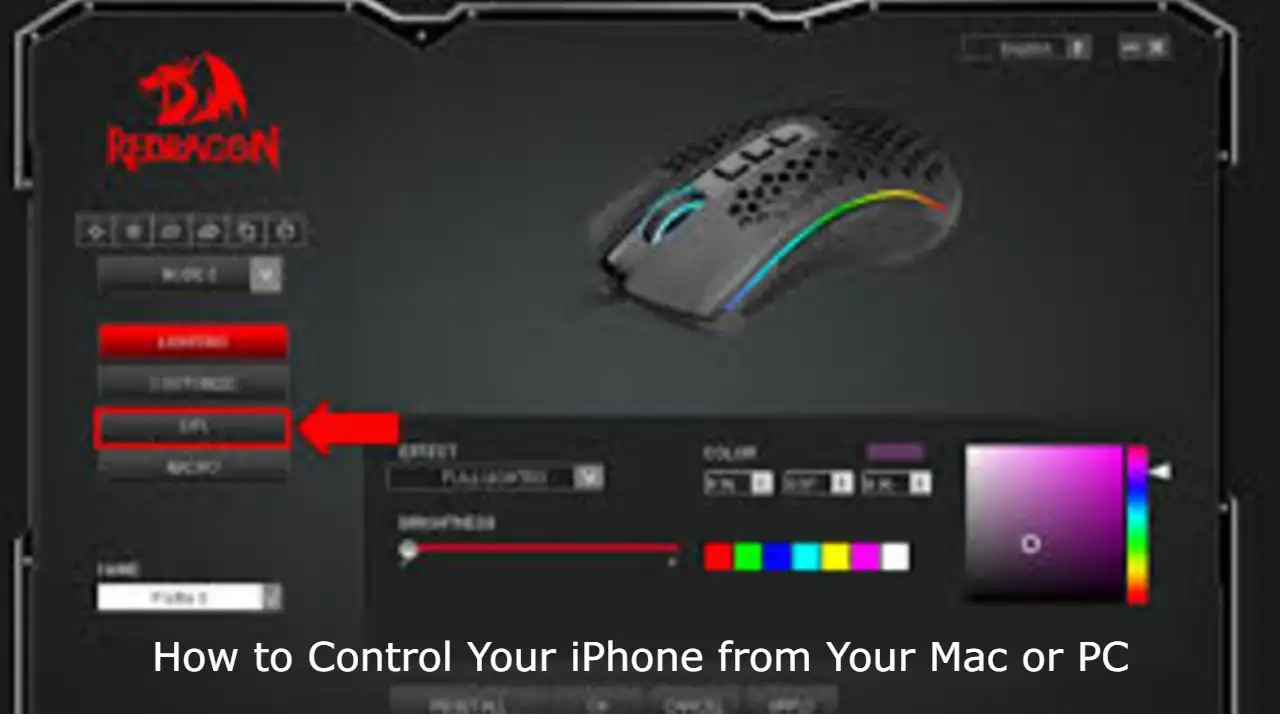
How to Adjust Your Mouse Polling Rate on PC & Mac: A Complete Guide
Your mouse polling rate plays a significant role in determining how responsive your cursor feels. Whether you’re a gamer, graphic designer, or general user, adjusting your mouse polling rate can optimize performance and provide a smoother experience.
In this guide, we will cover everything you need to know about adjusting the mouse polling rate on Windows and macOS to enhance precision and responsiveness.
What is the Mouse Polling Rate?
The mouse polling rate refers to the frequency at which your mouse reports its position to your computer. It is measured in Hertz (Hz), and a higher polling rate means the mouse sends more updates per second, resulting in lower input lag and smoother cursor movement.
Common Mouse Polling Rates:
- 125 Hz – Reports position every 8 milliseconds
- 250 Hz – Reports position every 4 milliseconds
- 500 Hz – Reports position every 2 milliseconds
- 1000 Hz – Reports position every 1 millisecond
For competitive gaming or precise tasks, a higher polling rate (500Hz–1000Hz) is recommended. However, a lower polling rate can help conserve battery life on wireless mice.
How to Check Your Mouse Polling Rate
Before adjusting your mouse polling rate, you may want to check its current value.
Method 1: Online Polling Rate Test (PC & Mac)
- Visit an online mouse polling rate tester such as https://zowie.benq.com/en/support/mouse-rate-checker.html.
- Move your mouse around the screen.
- The website will display your mouse’s polling rate in real time.
Method 2: Using Software (Windows Only)
Some gaming mice, like Logitech, Razer, and Corsair, come with their software that shows the polling rate. Open the software and navigate to the mouse settings section.
How to Adjust Mouse Polling Rate on Windows (PC)
If you are using a gaming mouse, adjusting the polling rate is usually done through the manufacturer’s software or physical DPI buttons.
Method 1: Using Mouse Software
Most gaming mice come with dedicated software that allows you to change the polling rate. Here’s how:
For Logitech G Mice (G HUB Software)
- Download & Install Logitech G HUB from the official website.
- Open the software and select your Logitech mouse.
- Navigate to DPI & Polling Rate Settings.
- Choose a polling rate: 125 Hz, 250 Hz, 500 Hz, or 1000 Hz.
- Click Apply and restart the software if necessary.
For Razer Mice (Razer Synapse Software)
- Install Razer Synapse from the official website.
- Open the software and select your Razer mouse.
- Go to the Performance tab.
- Select the desired polling rate (125Hz–1000Hz).
- Save and close the software.
For Corsair Mice (iCUE Software)
- Download the Corsair iCUE software.
- Open the software and locate your mouse.
- Navigate to Device Settings.
- Adjust the Polling Rate.
- Apply the changes.
Method 2: Changing the Polling Rate Using Mouse Buttons
Many gaming mice come with a dedicated polling rate button (usually underneath the mouse). To change the polling rate:
- Disconnect the mouse from your PC.
- Hold down the polling rate button.
- Plug the mouse back in while holding the button.
- Release the button when the LED indicator changes or blinks (varies by brand).
Here’s a reference for common mouse brands:
- Logitech: Hold the DPI button while reconnecting.
- Razer: Use Razer Synapse software.
- Zowie: Hold button combinations (Check the manual for details).
Method 3: Using Windows Registry (Advanced Users)
If your mouse doesn’t have dedicated software, you can tweak the polling rate in the Windows registry (risky if done incorrectly).
- Press Win + R, type
regedit, and hit Enter. - Navigate to:
HKEY_LOCAL_MACHINE\SYSTEM\CurrentControlSet\Services\HidUsb\Parameters - Locate PollingRate (if it doesn’t exist, create a DWORD (32-bit) Value named
PollingRate). - Set the value to:
8for 125Hz4for 250Hz2for 500Hz1for 1000Hz
- Click OK and restart your PC.
How to Adjust the Mouse Polling Rate on a Mac
Unlike Windows, macOS does not offer built-in options to modify the polling rate. However, you can still adjust it using third-party tools.
Method 1: Using USB Overdrive
USB Overdrive is a macOS tool that allows you to adjust polling rates for USB mice.
Steps to Adjust Polling Rate on Mac:
- Download USB Overdrive from https://www.usboverdrive.com/.
- Install and launch the app.
- Select your mouse device.
- Look for the Polling Rate option (if supported by your mouse).
- Adjust it to 250Hz, 500Hz, or 1000Hz.
- Apply the changes and restart your Mac.
Method 2: Using SteerMouse
SteerMouse is another great tool for tweaking mouse settings on macOS.
- Download and install SteerMouse from https://plentycom.jp/en/steermouse/.
- Open the software and select your mouse.
- Adjust the polling rate in the settings.
- Apply the changes and test your new settings.
Best Polling Rate for Gaming & Productivity
For FPS & Competitive Gaming:
- Recommended: 1000Hz for fastest response times.
- Alternative: 500Hz if experiencing unstable performance.
For Casual Gaming & General Use:
- Recommended: 500Hz for a balance of speed and stability.
- Alternative: 250 Hz for power efficiency (especially for wireless mice).
For Graphic Design & Office Work:
- Recommended: 250Hz–500Hz for smoother cursor movement without excessive CPU usage.
FAQs
1. Does a Higher Polling Rate Make a Difference?
Yes, a higher polling rate reduces input lag and makes mouse movements more responsive, especially in fast-paced games.
2. Can I Change the Polling Rate on a Regular Office Mouse?
Most non-gaming mice do not support polling rate adjustments. You may need a gaming mouse with built-in software or hardware toggles.
3. Will a Higher Polling Rate Use More CPU?
Yes, a 1000Hz polling rate requires more CPU resources than 125Hz, but the difference is negligible on modern systems.
4. Why Is My Mouse Lagging After Changing Polling Rate?
Some USB ports may not support high polling rates. Try using a different USB port or reverting to a lower polling rate.
Conclusion
Adjusting your mouse polling rate can greatly improve performance for gaming, designing, and general use. Whether you’re on Windows or Mac, using the right tools and settings can help you get the best experience from your mouse.
Try out these methods and let us know which one worked best for you! 🚀
Hardware & Gadgets How-To
How to Extend Battery Life on Android & iPhone (Proven Tricks)
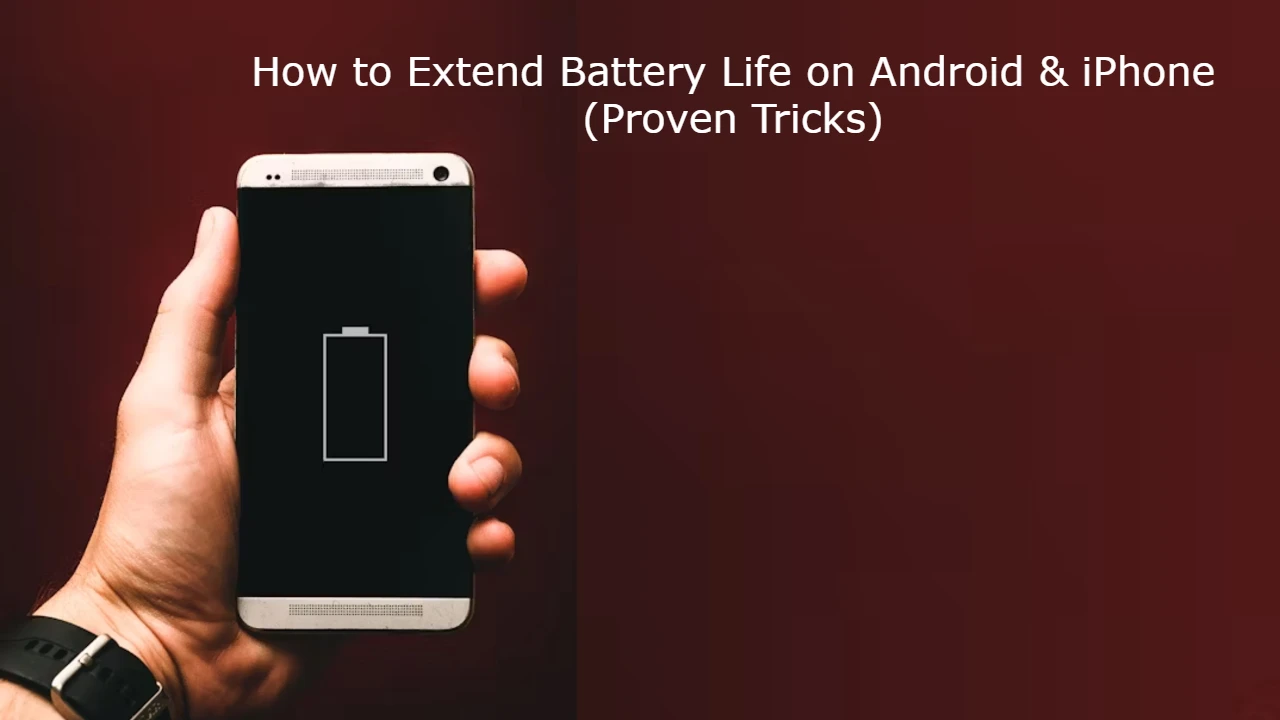
Few things are more frustrating than your phone battery running out in the middle of the day. 😩 Whether you use an Android or iPhone, battery drain is one of the most common smartphone issues.
The good news? You don’t need a new phone or a bigger battery—just a few smart tweaks can make your battery last much longer.
In this guide, we’ll cover proven tricks to extend battery life on both Android and iPhone, with step-by-step instructions you can follow right now.
📌 Why Does Smartphone Battery Drain Fast?
Common reasons your battery doesn’t last:
-
🔆 Screen brightness too high
-
📱 Too many background apps running
-
📡 Always-on features (Wi-Fi, Bluetooth, GPS, 5G)
-
🔔 Frequent notifications
-
⚙️ Software or app bugs
-
🔋 Old battery health
✅ Quick Fixes to Save Battery Instantly
Before diving into detailed steps, try these simple fixes:
-
Lower brightness or use Auto-Brightness
-
Turn on Battery Saver / Low Power Mode
-
Close apps running in the background
-
Switch to Airplane Mode when you don’t need network
🛠️ Step-by-Step: Extend Battery Life on Android
1. Enable Battery Saver Mode
-
Open Settings → Battery → Battery Saver.
-
Turn it on manually or set it to activate automatically at low charge.
👉 This limits background activity and reduces power usage.
2. Lower Screen Brightness & Use Dark Mode
-
Go to Settings → Display → Brightness → Reduce brightness.
-
Enable Dark Mode for supported apps (uses less power on OLED screens).
📌 Dark Mode can save up to 30% battery on OLED phones.
3. Turn Off Location & Bluetooth When Not Needed
-
Swipe down → Quick Settings → Turn off GPS & Bluetooth.
-
Or go to Settings → Location and disable unnecessary apps from using location.
4. Restrict Background Apps
-
Go to Settings → Apps → Battery Usage.
-
Select apps draining power → Restrict background activity.
👉 Apps like Facebook, Instagram, and TikTok are common culprits.
5. Update Apps & Software
-
Open Google Play Store → Profile → Manage apps → Update all.
-
Go to Settings → System → System update to update Android.
📌 Updates often fix bugs that drain battery.
6. Disable Always-On Display & Extra Animations
-
Settings → Display → Always-On Display → Off.
-
Settings → Developer Options → Reduce animations.
7. Replace Battery if Health is Low
-
Dial
*#*#4636#*#*(some devices) → Battery info. -
Or use AccuBattery app to check battery health.
-
If capacity is below 80%, consider replacing the battery.
🛠️ Step-by-Step: Extend Battery Life on iPhone
1. Enable Low Power Mode
-
Go to Settings → Battery → Low Power Mode.
-
Or ask Siri: “Turn on Low Power Mode”.
👉 iPhone reduces background refresh, email fetch, and visual effects.
2. Optimize Screen Settings
-
Settings → Display & Brightness → Auto-Brightness ON.
-
Enable Dark Mode for OLED models.
3. Disable Background App Refresh
-
Settings → General → Background App Refresh → Off.
👉 This stops apps from consuming battery in the background.
4. Turn Off Location Services
-
Settings → Privacy & Security → Location Services.
-
Disable location for apps that don’t need it.
5. Manage Push Notifications
-
Settings → Notifications → Turn off for unnecessary apps.
-
Fewer notifications = fewer screen wake-ups.
6. Check Battery Health
-
Settings → Battery → Battery Health & Charging.
-
If Maximum Capacity < 80%, it’s time to replace the battery.
7. Update iOS & Apps
-
Settings → General → Software Update.
-
Open App Store → Profile → Update All.
📹 Bonus: Video Walkthrough
👉 Add a screen recording video showing:
-
How to enable Low Power Mode (iPhone)
-
How to restrict background apps (Android)
-
Before & after battery performance
This increases engagement + helps visual learners.
⚡ Pro Tips for Both Android & iPhone
-
Avoid extreme temperatures (hot/cold damages battery)
-
Use original chargers (fake ones reduce lifespan)
-
Don’t let battery drain to 0% regularly
-
Charge between 20% – 80% for best health
-
Restart your phone once a week to refresh system
📝 Final Thoughts
With these proven battery-saving tricks, you can easily make your Android or iPhone last longer throughout the day.
Start with simple changes like enabling Battery Saver/Low Power Mode, reducing screen brightness, and disabling unnecessary background apps. For long-term results, check your battery health and replace it if needed.
🔋 Remember: A little optimization goes a long way toward keeping your phone alive when you need it most!
Hardware & Gadgets How-To
How to Build a Budget Gaming PC in 2025 (Step-by-Step Guide)
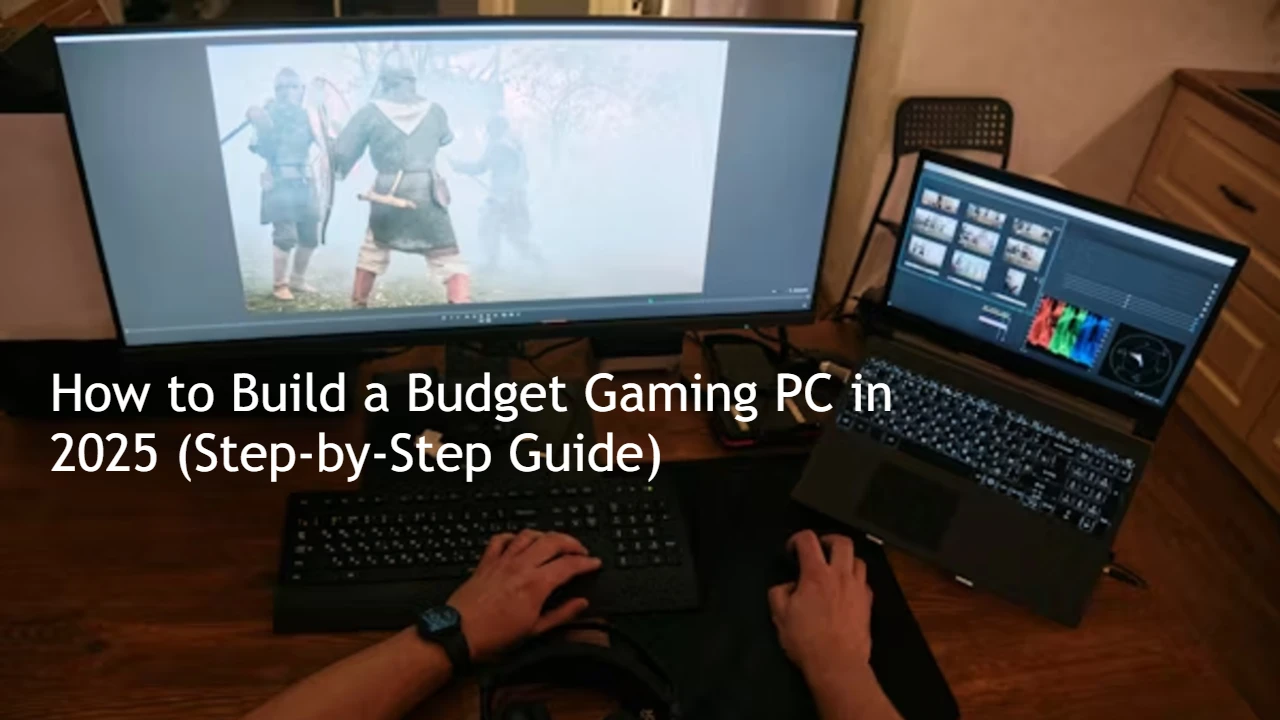
Building your own gaming PC is one of the smartest ways to save money while getting the performance you want. Instead of paying extra for prebuilt systems, you can pick the right parts, assemble them yourself, and enjoy a machine that’s powerful, upgradable, and cost-efficient.
In this 2025 budget gaming PC guide, we’ll walk you through:
-
Choosing the right components without overspending
-
Step-by-step assembly process
-
Common mistakes to avoid
-
Proven tips to maximize performance
Whether you’re a first-time builder or upgrading an old rig, this guide has you covered.
💸 Why Build a Budget Gaming PC in 2025?
-
Cheaper than prebuilt PCs – No markup for assembly.
-
Custom performance – Choose parts based on your games.
-
Easily upgradable – Swap parts instead of buying a whole new system.
-
Better cooling & efficiency – DIY builds often run cooler and quieter.
📌 Step 1: Decide Your Budget
For 2025, here’s a rough budget guide:
-
$500 – $700 → Entry-level gaming (1080p, medium settings)
-
$700 – $1,000 → Mid-range gaming (1080p/1440p, high settings)
-
$1,000+ → High-end gaming (1440p/4K, ultra settings, future-proof)
👉 Pro Tip: Always leave 10–15% of your budget aside for accessories (keyboard, mouse, monitor).
📌 Step 2: Choose the Right Parts
Here’s what you need for a gaming PC:
🧠 CPU (Processor)
-
Budget-friendly: AMD Ryzen 5 5600 or Intel Core i5-12400F
-
Balanced performance for gaming + multitasking
🎮 GPU (Graphics Card)
-
Entry: NVIDIA RTX 3050 / AMD RX 6600
-
Mid-range: RTX 3060 Ti / RX 6700 XT
-
Affordable & capable of smooth 1080p/1440p gaming
🏗️ Motherboard
-
Match CPU socket type (AM4 for Ryzen, LGA1700 for Intel)
-
Look for B550 (AMD) or B660 (Intel) chipsets for budget builds
💾 RAM
-
Minimum: 16GB DDR4 (3200MHz)
-
Budget gamers don’t need 32GB unless streaming or heavy multitasking
💽 Storage
-
500GB NVMe SSD (fast boot & load times)
-
Optional: Add 1TB HDD for extra game storage
🔌 Power Supply (PSU)
-
At least 550W – 650W, 80+ Bronze certified
-
Never cheap out on PSU (affects stability & safety)
🖥️ Case
-
Mid-tower with good airflow
-
Budget-friendly options: Cooler Master, NZXT, DeepCool
❄️ Cooling
-
Stock coolers are fine for budget CPUs
-
Add 1–2 case fans for better airflow
📌 Step 3: Gather Your Tools
-
Phillips-head screwdriver
-
Anti-static wrist strap (recommended)
-
Clean workspace with good lighting
📌 Step 4: Step-by-Step Assembly
1. Prepare Case & Motherboard
-
Unbox the case, install standoffs for motherboard
-
Place motherboard carefully
2. Install CPU
-
Lift CPU socket lever
-
Align CPU notch with socket
-
Place CPU → Close lever
3. Install RAM
-
Open RAM slots → Insert sticks until they click
-
Use dual-channel (slots 2 & 4 usually)
4. Install Storage (SSD)
-
Insert NVMe SSD into M.2 slot → Screw it in place
-
Or mount SATA SSD with cables
5. Install GPU
-
Insert into PCIe slot → Secure with screws
-
Connect power cables (if required)
6. Install Power Supply
-
Place PSU in case (bottom/rear)
-
Connect 24-pin ATX & CPU power cables
7. Cable Management
-
Route cables behind case for airflow
-
Tie them with zip ties
8. First Boot
-
Connect monitor, keyboard, mouse
-
Power on → Enter BIOS (Del/F2 key)
-
Check system detects CPU, RAM, Storage, GPU
📌 Step 5: Install Operating System
-
Create a Windows 11 USB installer (or Linux for budget builds)
-
Boot from USB → Install OS
-
Install latest drivers from manufacturer websites
🛠️ Common Issues & Fixes
-
No Display? → Check GPU cable & RAM seating
-
PC Doesn’t Power On? → Ensure PSU switch is ON & cables connected
-
Overheating? → Reapply thermal paste, add case fans
📹 Bonus: Video Tutorial
👉 Record or embed a step-by-step video showing:
-
CPU & GPU installation
-
Cable management tips
-
First boot & BIOS settings
This helps beginners follow along visually.
⚡ Pro Tips for Budget Builders
-
Buy parts during sales (Black Friday, seasonal deals)
-
Consider refurbished GPUs/CPUs for extra savings
-
Prioritize GPU > CPU for gaming performance
-
Don’t overspend on fancy RGB—focus on performance first
📝 Final Thoughts
Building a budget gaming PC in 2025 is easier than ever, and it saves you money while giving you more control.
With the right parts, smart assembly, and good cable management, you can enjoy smooth gaming at 1080p or even 1440p—without breaking the bank.
👉 Start small, upgrade later, and remember: a well-built PC can last you 5–7 years with minor upgrades.
Hardware & Gadgets How-To
How to Activate Microsoft Office 2021 Without a Product Key (Legally)
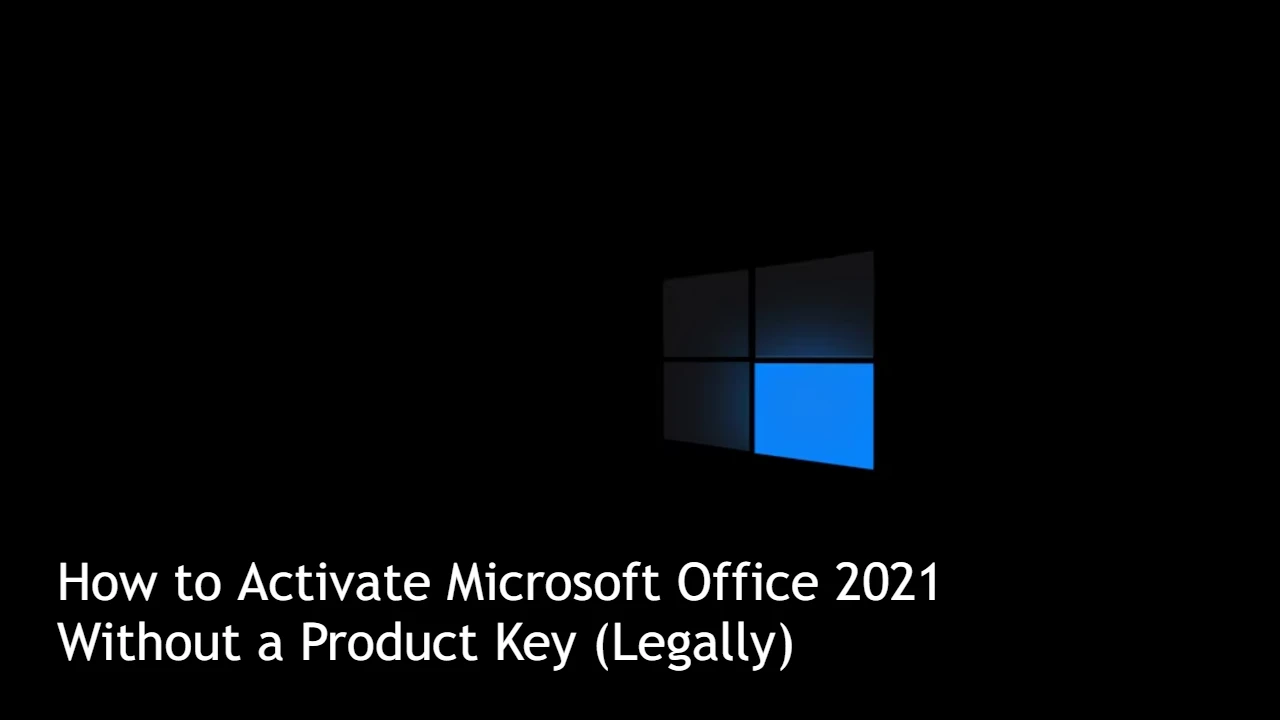
Method 1: Using a Microsoft Account and Digital License
If you purchased Office 2021 online from Microsoft or a trusted vendor, you might have received a digital license. This method doesn’t require a traditional product key. Here’s how to activate your Office using a Microsoft account.
Step 1: Install Microsoft Office 2021
First, you need to install Microsoft Office on your device. If you haven’t already installed it, follow these steps:
- Go to the Microsoft Office website:
- Open your browser and go to the official Microsoft Office download page.
- Sign in to your Microsoft account:
- If you don’t have an account, you’ll need to create one.
- Download the installer:
- Click “Install Office” and download the installer file.
- Run the installer:
- Open the downloaded file and follow the on-screen instructions to install Office 2021.
Step 2: Activate Using Microsoft Account
Once Office 2021 is installed, follow these steps to activate it via your Microsoft account:
- Open any Office app (Word, Excel, PowerPoint, etc.).
- When you open the app for the first time, it will ask for activation. Select “Sign In” with your Microsoft account.
- Sign in with the account that you used to purchase or register Office 2021 (the account associated with your digital license).
- Activate Office:
- Once signed in, the activation process will be automatic, and Office will be activated without needing a product key.
Note: If you purchased Office through Microsoft 365, the subscription will be recognized, and you will be activated without any need for a product key.
Step 3: Verify the Activation Status
To ensure that your Office installation has been activated:
- Open any Office app (e.g., Word or Excel).
- Go to File > Account (or Office Account).
- Under the Product Information section, you should see “Product Activated” and your Microsoft account listed.
Method 2: Using Microsoft Support and Recovery Assistant
If you’ve already purchased Office 2021 but are having trouble with activation, you can use Microsoft’s Support and Recovery Assistant tool.
Step 1: Download the Microsoft Support and Recovery Assistant
- Go to the Microsoft Support and Recovery Assistant download page:
Download Microsoft Support and Recovery Assistant - Click “Download Now” to start the download.
- Run the downloaded tool.
Step 2: Run the Tool
- Open the tool after installation.
- Choose “Office Activation” from the list of issues.
- Select “I’m having trouble activating Office” and follow the on-screen instructions.
- The tool will troubleshoot the issue and attempt to resolve any activation problems related to your Microsoft account or digital license.
Step 3: Complete the Activation
If the tool successfully resolves the issue, your Office 2021 should now be activated.
Method 3: Use Volume Licensing (for Business Users)
For business users, Office 2021 can also be activated using a Volume License. If your organization provides Office through this method, the activation steps will differ.
Step 1: Install Office via Volume Licensing Service Center
- Log in to the Volume Licensing Service Center (VLSC).
- Find the Office 2021 version your organization has purchased.
- Download and install Office 2021 on the target machine.
Step 2: Use Activation Wizard
After installation, open any Office application and follow these steps:
- Open an Office application (e.g., Word).
- A prompt should appear asking you to Activate Office.
- Choose Activate via the Internet (Volume License) and follow the instructions.
Additional Tips and Troubleshooting
Check for Updates:
Sometimes, issues can arise if the software is outdated. Make sure your Office installation is up-to-date:
- Open any Office app.
- Go to File > Account.
- Under Product Information, click Update Options > Update Now.
Ensure You’re Signed in to the Correct Microsoft Account:
- If you’re using a Microsoft 365 or Office 2021 subscription, make sure you’re signed in to the correct Microsoft account associated with your license.
Summary
Activating Microsoft Office 2021 legally without a product key is possible by using either a Microsoft account and digital license, or for businesses, Volume Licensing. Both methods allow activation without the need for traditional product keys, leveraging Microsoft’s modern activation system.
If you encounter any issues, try using the Microsoft Support and Recovery Assistant or verify your account and installation status through the Microsoft Account Portal.
-

 Mobile & Apps How-To6 months ago
Mobile & Apps How-To6 months agoHow to Check and Use MTN Bonus Data in 2025
-

 Hardware & Gadgets How-To10 months ago
Hardware & Gadgets How-To10 months agoHow to recharge airtime on your Airtel Sim Card
-

 Mobile & Apps How-To8 months ago
Mobile & Apps How-To8 months agoHow to unlock Acess More Bank App
-

 Mobile & Apps How-To6 months ago
Mobile & Apps How-To6 months agoMTN APN Settings for Fast Internet: A Complete Guide
-
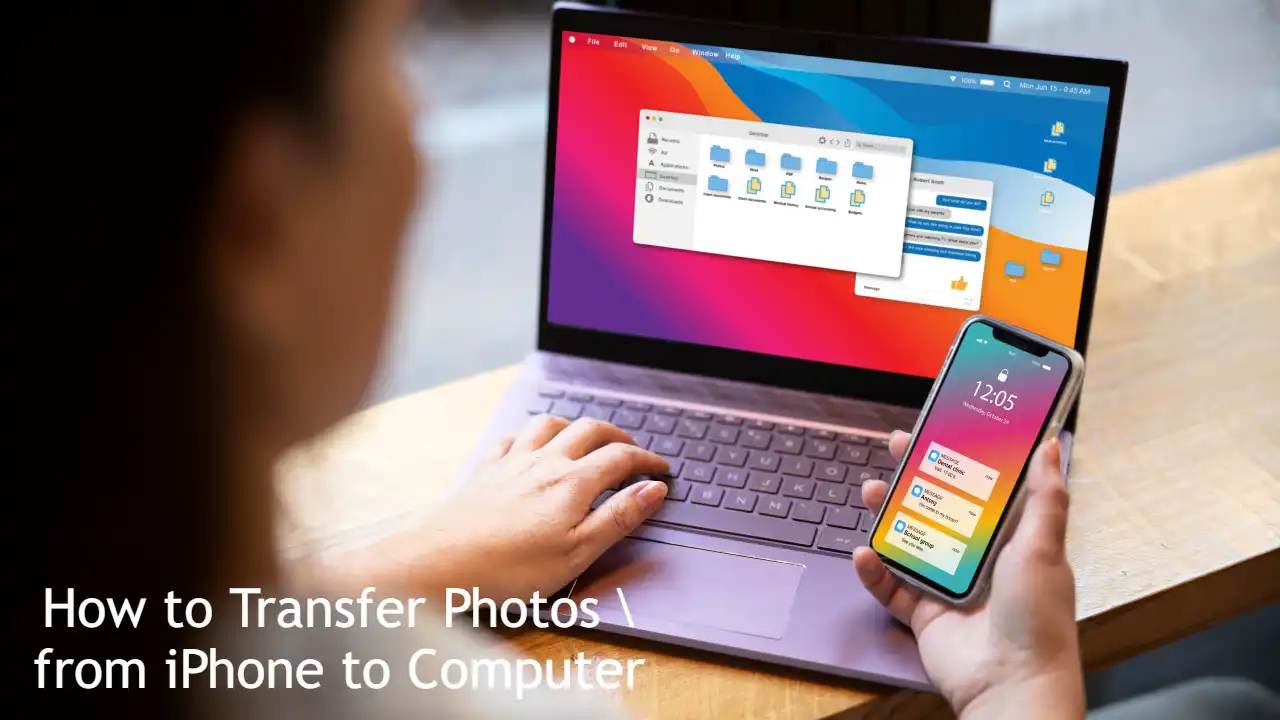
 Hardware & Gadgets How-To11 months ago
Hardware & Gadgets How-To11 months agoHow to Transfer Photos from iPhone to Computer: Quick Guide
-

 Mobile & Apps How-To6 months ago
Mobile & Apps How-To6 months agoHow to Borrow Money from Opay Loan App?
-

 AI & Automation Guides11 months ago
AI & Automation Guides11 months agoHow to Make ChatGPT Content Undetectable From AI Detectors
-

 Mobile & Apps How-To6 months ago
Mobile & Apps How-To6 months agoHow to Check Internet and File History on Your Computer: A Complete Guide

